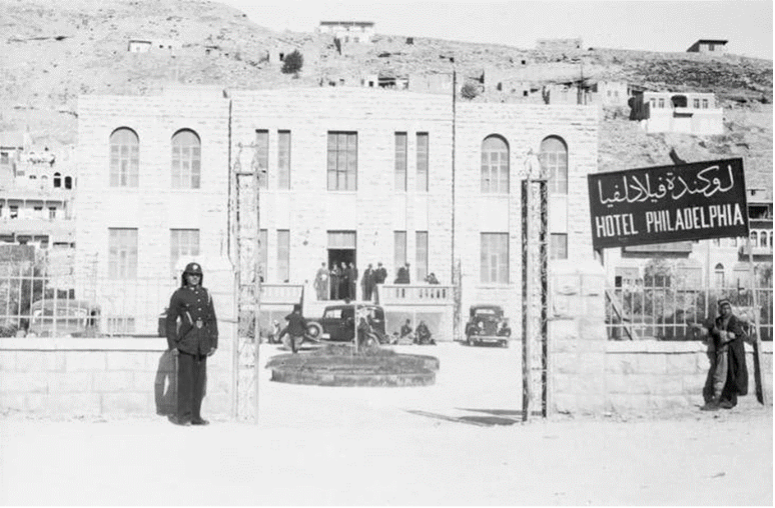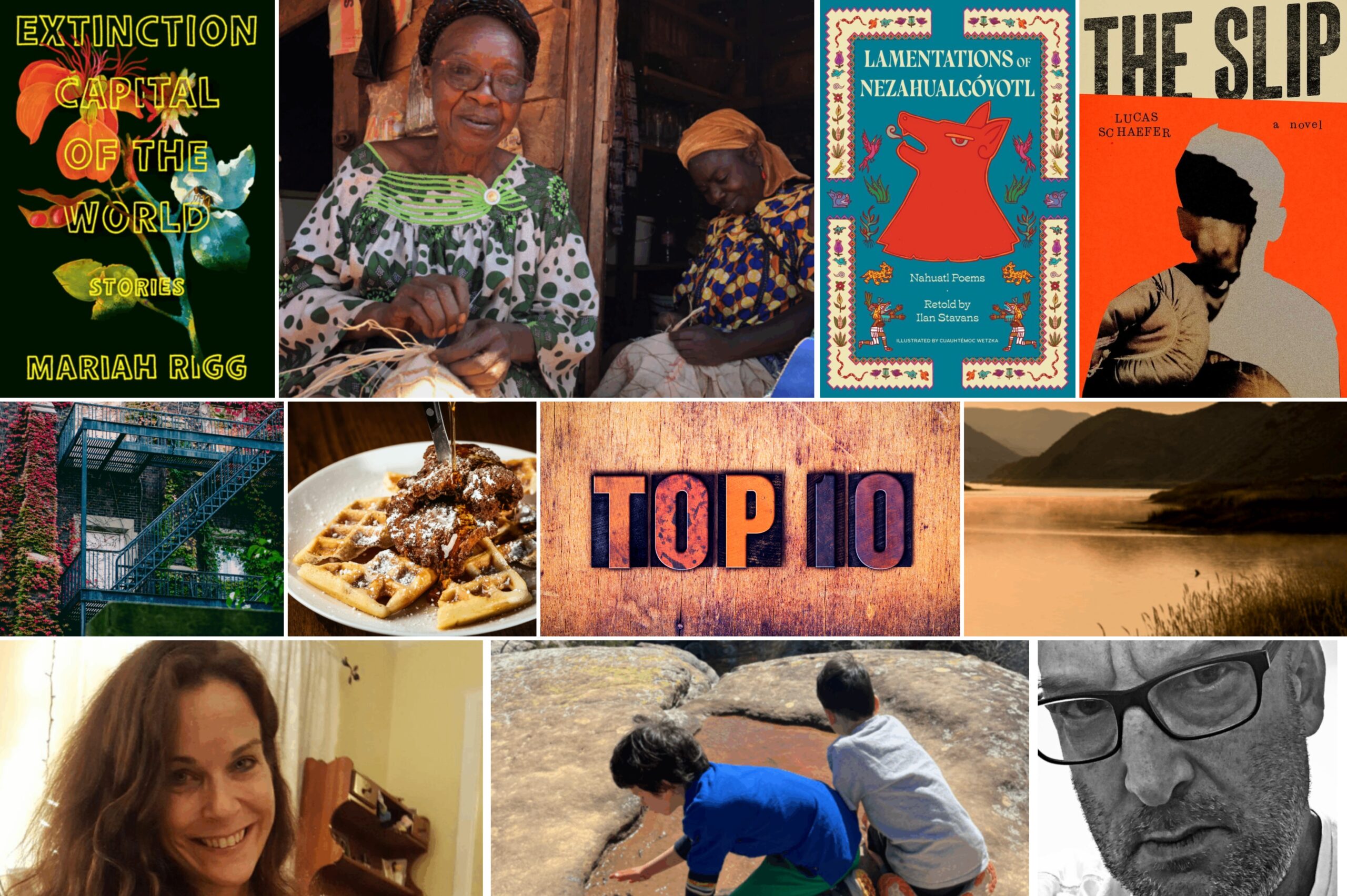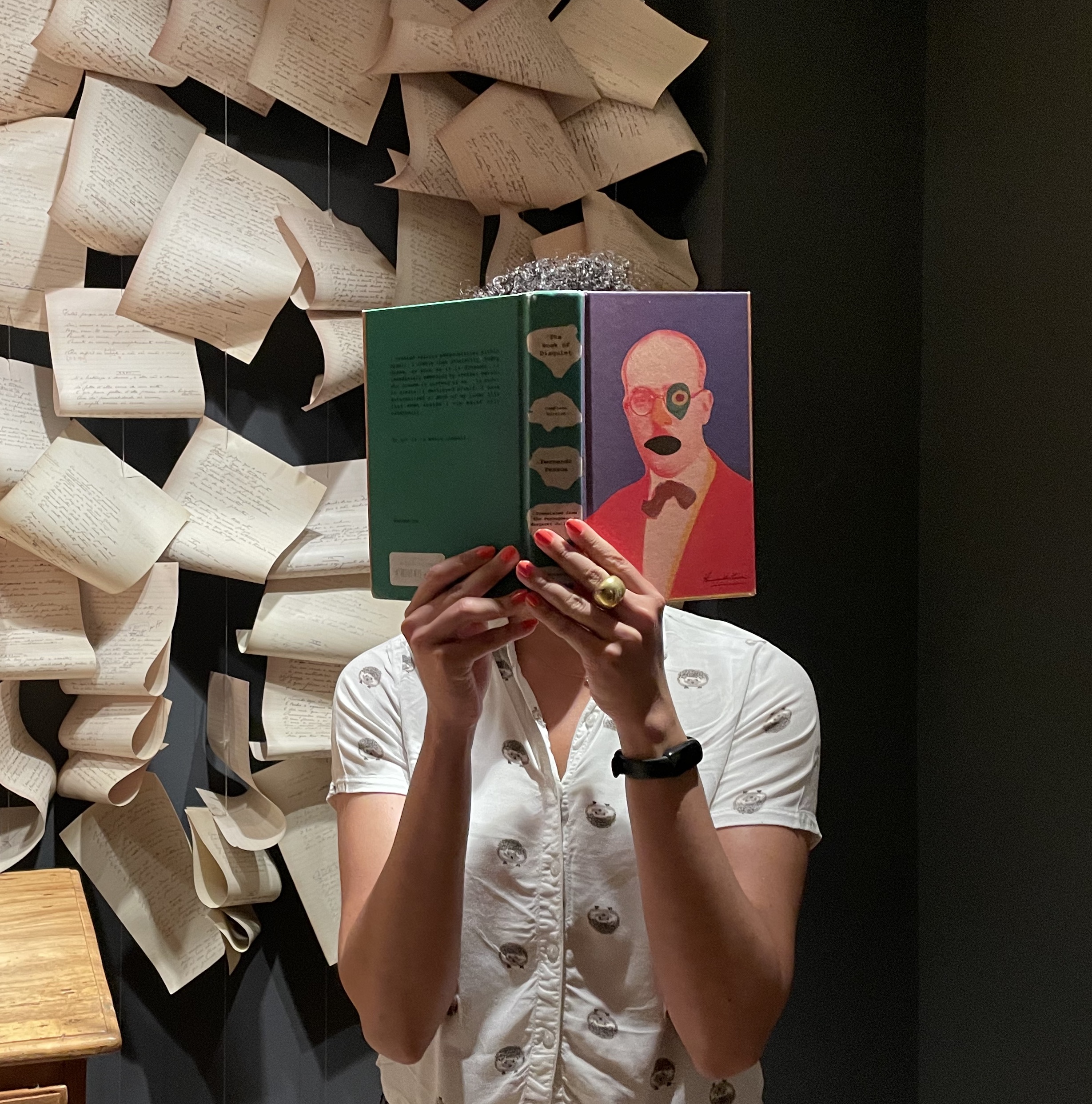By KHALED SAMEH
Translated by WIAM EL-TAMAMI
1.
As I sit here in the Hashemite Plaza, I am surrounded by noise—visual, auditory—coming at me from all directions. This grand forum attached to the Roman Theatre has now become a breathing space for hundreds of thousands of residents of East Amman and the surrounding governorates. Some come here for recreational reasons, to get together, or to make a living. There are many other reasons why people come to this square, reasons that are not unique to Amman and that are found in most cities around the world. There are pimps and sex workers (heterosexual and homosexual); children being exploited in different ways; dealers of hashish and other drugs—along with various other things that Ammanis would include in their long list of taboo topics.
Why am I here?
To see the very first hotel that was built in this city. In an homage to “brotherly love,” they called it the Philadelphia Hotel.
Have you lost your mind? That hotel is dead and buried.
In 1986, Abdelraouf Rawabdeh, the mayor of the capital (which had not yet become the Greater Amman Municipality), was walking through the city center with King Hussein, consulting him on development plans for the area. With some caution and a touch of optimism, he pointed toward the Philadelphia Hotel: “The plaza that we will create here, Sidi, Your Majesty, will entail tearing down this hotel.”
The king contemplated the scene for a moment, perhaps recalling memories he had in that place—or perhaps not. In any case, a witness later recalled that the king uttered a single phrase: “With God’s blessings.”
The hotel had to wait for fifty more years for God’s blessings. Many other Amman landmarks were demolished with these same blessings, their traces filed away in the photographic archives of travelers, orientalists, and foreign research institutions.
Hisham Bustani writes that several members of his family were born and spent their lives in Amman’s Sayl area in the center of the city. The landmarks of the area, which his elders had told him stories about when he was a child, were wiped out by decisions coming from above. And yet, in every visit to the area, Hisham sees all as it once was. How is that possible, when these landmarks have vanished without a trace?
Hisham can still see the Sayl, the stream where children swam and people fished. He can still see the Circassian carts, pulled by oxen, which the bedouins of Amman marveled at when they first began to see them. He can still see the mud houses that became the nucleus of the city. The mud houses whose raw material the Sayl had provided and that had sprung up haphazardly around the riverbanks, without any planning or oversight (his aunt was born in one of them, two years before the birth of the new capital). He can still see the stairs—some of which had been built with the stones scattered around Roman ruins—leading people up toward the hills once the valleys became overcrowded.
2.
According to several Amman historians, Winston Churchill stayed in the Philadelphia Hotel in the mid-1940s. He came to celebrate the independence of the state of Transjordan that he had created two and a half decades earlier. It was an opportunity to tour the East, to check up on regimes he had helped to establish, and to inspect the borders, some of which had been transferred from his papers into reality. Perhaps he was like a nobleman who, upon returning to his palace after a leisure trip, rushes straight to his gardens to ensure that the servants have followed his orders in his absence—have taken care of the trees that he had planted and pruned himself.
We have very little information about this visit. What did Sir Winston do there, other than catch up on the restful sleep he had been deprived of during the long years of the war? Nobody knows.
Perhaps we can try to imagine.
Winston Churchill sits on the hotel terrace, overlooking the Roman Theatre and the Odeon. The terrace and the courtyard are aristocratic: restrained, reserved. A thick stone wall encircles the balcony, which is bisected by a stone staircase. The balcony is flanked by a balustrade with square bases and capitals, lightly adorned, and leads down to the garden and hotel entrance. The floor tiles are white marble with black inserts, a style that was brought in from the most famous factories of Nablus or Damascus and that spells luxury. Crystal glasses are carefully arranged on a wicker table, at the center of which is the guest’s whiskey bottle. Surrounded by dark oak chairs, the table overlooks the first swimming pool in Amman: a city where people have no experience of swimming other than in the shallow waters of the Sayl. There is also a tennis court, in a country where nobody knows anything about this “sport of the bourgeoisie,” aside from an emerging wealthy elite who have flocked here from different parts of the Levant.
(A few years after the founding of the capital, this elite will prefer to live in Jabal al-Lweibdeh and Jabal Amman, away from the peasants and bedouins gathered in the Sayl area. This elite also has access to other luxuries, such as large radios, a number of Lebanese and Egyptian glossy magazines, and a few faltering local newspapers, all of which provide glimpses into what’s happening in and outside the country. As for the rest of the residents of Amman, scattered around the Sayl, they have their moonlit nights for free entertainment.)
Under the guidance of the king (who, a few days before Churchill’s visit, had been a prince), the hotel administration has chosen a room for Churchill overlooking the ruins of the two Roman theaters. The larger ruin is called “The Pharaoh’s Steps” by the people of Amman; the smaller one was only given a name decades later, after its restoration (neither ruin, at that point, has been restored yet). The king’s people must have thought: This Churchill is a politician and a man of culture (he would, some years later, receive the Nobel Prize for Literature), so he must be interested in history, in the traces of civilizations that have predated his game of maps by thousands of years.
The gentle summer air of Amman appeals to Churchill, and he enjoys sitting out on the terrace in the evenings. Back in London, they told him that Amman, like all Arabian deserts, was hellishly hot in the summer. He was surprised when he arrived—and cursed the lies and nonsense of his advisors and assistants.
“Here, I have created a state and a capital for those bedouins,” he declares to some of his travel companions, who sit with him on the terrace until after sunset. While he’s speaking, they marvel at the sight of a shepherd leading his flock, which ambles with a full-bellied laziness behind him, having drunk their fill at the Sayl. The shepherd and his flock climb Jabal al-Joufa, then disappear. The cameras of Churchill’s companions follow him. From the windows of the hotel, the cameras of other foreign guests are also drawn to the scene. A woman walks past the hotel gate, wrapped in a black abaya. The foreigners with their cameras catch her eye, and she tells her five children, trailing behind her: “Look at those bastards, taking pictures of us!”
The cultured colonialist contemplates the history scattered before him, under mounds of dirt, dried grass, and animal dung. In his right hand he holds another history, the maps of other imagined states. He is terrified at the thought of the sun setting on his country’s empire, and his face that day betrays this; he is stubbornly insistent.
According to historians, this guest of Amman drew, erased, transformed, and tore up borders. He performed all these actions, to maps and destinies, while holding a glass of his favorite Johnnie Walker whisky in one hand, and countries, capitals, and rulers in the other.
Perhaps Churchill performed some of this work at Hotel Philadelphia, in the very same village that he had woken up and suddenly ordered to join a new fleet of capitals.
This is Churchill’s first and last encounter with Amman. He retires to his room at the end of the night and sleeps heavily, under the influence of whisky and map ink—an image that is not captured by any camera, and is lost to the history of photography forever.

3.
I wake from my thoughts to the sound of patriotic songs blaring from huge loudspeakers and young people dancing. Suddenly, a Jordanian military band enters the fray with Scottish bagpipes, as foreign tourists happily snap pictures. And then I remember: the country is celebrating Independence Day.
Khaled Sameh is a Jordanian writer, journalist, and cultural activist. He has published four short story collections and two novels. His writing examines social transformation, political movements, the effects of war on human lives, and the relationship between the individual and power.
Wiam El-Tamami is an Egyptian writer and translator. Her work has appeared in publications such as Granta, The Paris Review, Ploughshares, Freeman’s, and AGNI. She won the 2011 Harvill Secker Young Translators’ Prize, was a finalist for the 2023 DISQUIET International Prize, and was nominated for a 2024 Pushcart Prize.



